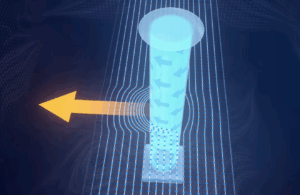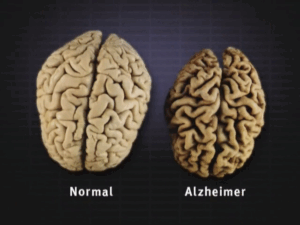Wormholes in Interstellar and General Relativity
In the vast expanse of the universe, a phenomenon has captured the imagination of scientists and storytellers: wormholes. These cosmic shortcuts serve as portals to distant locations of the cosmos. In Christopher Nolan’s cinematic masterpiece, Interstellar, these passages play a pivotal role in humanity’s quest for survival. Beyond science fiction, the concept of wormholes is rooted in Albert Einstein’s theory of general relativity.
For much of human history, space was thought of as a big flat “stage” holding every planet, star, and other celestial body (1). However, Einstein’s theory of general relativity, established in 1915, revolutionized our understanding of space (2). Rather than picturing space alone, his theory stated that space and time make up the “stage” together. Imagine the universe as an interconnected web, where space and time intertwine to form a continuum known as spacetime. According to general relativity, the presence of mass and energy, such as a planet, causes spacetime to curve, much like a heavy ball placed on a stretched sheet. This curvature influences the motion of objects, dictating the gravitational interactions that govern the cosmos. General relativity is a mathematical theory and a set of equations that reveal how massive objects, like stars and planets, warp space and time, shape the trajectories of celestial bodies, and distort the passage of light (1).
But where do wormholes fit in? In Interstellar, wormholes serve as bridges between distant regions of spacetime, offering a shortcut through the cosmic labyrinth (3). Just as a worm burrows through an apple, a wormhole tunnels through spacetime, connecting two distant points in the universe. Using general relativity, humans have hypothesized different kinds of wormholes in our universe are possible (1,4,5).
The first kind of wormholes that were theorized were Einstein Rosen Bridges. These are similar to black holes but have a portal to an infinite parallel universe. Picture a flat, empty space, which curves when an object is placed in it. As the object compresses, spacetime becomes more curved around it, eventually warping to the extent that it forms a black hole. Instead of an object being trapped at the singularity of the black hole, Rosen Bridges provide the possibility of coming out on the other side of the event horizon, which is the boundary that marks the outer edge of a black hole. Objects can fall into the black hole and get spewed out. However, traversing these bridges is impossible, since it would take an infinite amount of time to cross—which no human would survive (1).
Therefore, humans need different kinds of wormholes: traversable wormholes. If string theory, which states that tiny strings construct the universe, is correct, then wormholes could exist all around us but be very difficult to find. To harness a wormhole, rather than find it, we could attempt to create one. For a wormhole to be traversable, it requires a few specific properties. First, it must connect distant parts of spacetime; second, it should not contain event horizons as they block two-way travel; third, it needs to be large enough so that the gravitational forces do not harm human travelers; and fourth, it must find a way to remain open, as gravity will try to close it. In order to make this happen, a new matter would be needed: exotic matter. Exotic matter has negative mass, which instead of making objects or plants attractive due to the force of gravity would act as a repulsive force. This repulsive force would be used to keep open the wormholes (1).
The existence of wormholes raises questions about the nature of space and time. Could traversing these cosmic bridges enable time travel or transport travelers to parallel universes? Similar to Interstellar, with the creation of wormholes, humans may potentially find new habitable worlds in our universe. Whether depicted on a screen or written in scientific journals, wormholes symbolize humanity’s curiosity and our ongoing quest to unravel the mysteries of the cosmos.
Sources
- In. (2018). Wormholes Explained – Breaking Spacetime [YouTube Video]. In YouTube. https://www.youtube.com/watch?v=9P6rdqiybaw
- Dutfield, S., Nola Taylor Tillman, & Bartels, M. (2022, January 5). What is the theory of general relativity? Space.com; Space. https://www.space.com/17661-theory-general-relativity.html
- to, C. (2024). Wormhole. Interstellar Wiki; Fandom, Inc. https://interstellarfilm.fandom.com/wiki/Wormhole#:~:text=In%20the%20film%2C%20a%20wormholegalaxy%20containing%20potentially%20habitable%20worlds.
- Tate, K. (2014, November 7). The Science of “Interstellar” Explained (Infographic). Space.com; Space. https://www.space.com/27692-science-of-interstellar-infographic.html
- Administration. (2022, October 31). New wormhole research shows how Interstellar got it wrong. The Lighthouse. https://lighthouse.mq.edu.au/article/please-explain/october-2023/please-explain-what-are-wormholes-and-are-they-real
Images







Comments are closed.